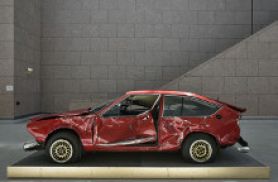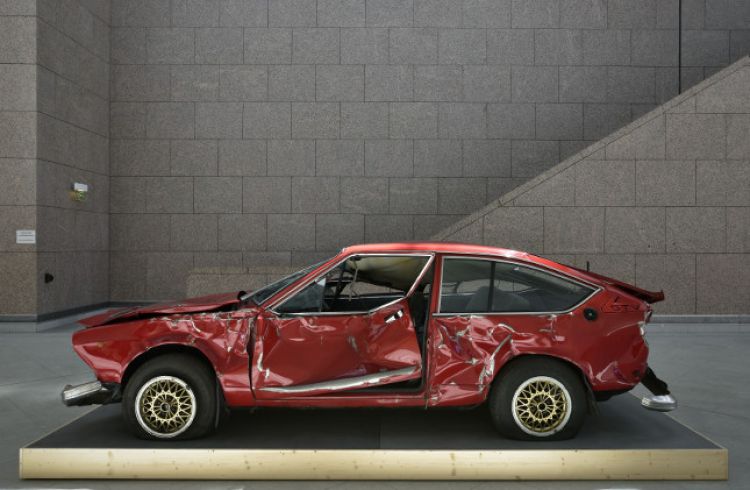Giulietta

Bertrand Lavier has been reflecting since 1978 on the identity of things and the definition of reality, as well as on the ambiguity of representation and language. His work, which combines simplicity and conceptual rigour, is characterised by the strong physical presence of the objects he selects. His work proceeds from formal and mental operations that disrupt and ultimately subvert categories, genres and conventions: objects are repainted identically and with an impasto that the artist describes as "Van Gogh style", others are stacked upon each other (a refrigerator on a safe, for example).
Giulietta was originally an Italian sports car, an Alfa Romeo involved in a road accident. In accordance with a set of specifications set out by the artist, this wreck has been saved from destruction and placed on a base. Presented in a Museum, this car, which has become a sculpture, does not fail to question its artistic status and its "dramaturgical" character. Giulietta does not tell a specific story. It is at once memory, symbol and image - of our society, our fears or our culture.
Bertrand Lavier explains:
"Giulietta is not a ready-made, but what I would call a ready-destroyed. Marcel Duchamp chose ready-mades for the beauty of their indifference and their lack of emotion […], I realised that I could produce something that would be the exact opposite: displaying an emotive principle. "
